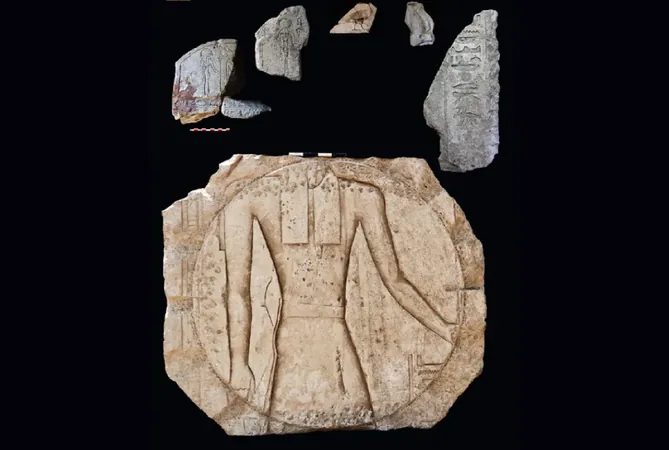
Shocking Discovery: Egypt's First and Largest Ancient Observatory Unearthed!
2024-10-08
Author: Jessica Wong
Uncovering Egypt's Astronomical Marvel
In a stunning turn of archaeological events, experts in Egypt have uncovered what was initially believed to be the ruins of a sixth-century BCE temple. This remarkable site, located near Alexandria in the fertile Nile Delta region, has now been reclassified as an astronomical observatory—the first and largest of its kind ever found, as declared by Egypt's Ministry of Tourism and Antiquities.
The Temple of Buto and Its Histories
The excavation took place at an ancient complex known in later times as the Temple of Buto, which the Egyptians referred to as Per-Wadjet. This sacred location was dedicated to the goddess Wadjet, who was revered as the protector of Lower Egypt and famously depicted in the form of a cobra. Historically, Buto was home to a renowned temple and an oracle, attracting significant annual festivals in her honor.
Previous Discoveries and Excavations
Previous archaeological digs in the 1960s and 1980s uncovered a palace from the Second Dynasty and six Greek bathhouses at this site. However, a fresh wave of excavations began a few years ago, leading to groundbreaking discoveries in 2022. Among the findings was a grand hall featuring three papyrus-shaped columns positioned along a north-south axis, alongside intricately engraved stone fragments and a limestone painting depicting a bird's head crowned with a white crown flanked by two feathers.
The Structure and Its Celestial Significance
Spanning approximately 9,150 square feet, the structure boasts a traditional eastern gateway and carvings directed toward the horizon where the sun rises. Within this celestial sanctuary, depictions of various sky deities, including Horus in his falcon form, emerged. The archaeological team also identified numerous smaller artifacts related to ancient Egyptian rituals, such as a bronze representation of Osiris, pottery, amphorae covers, and a beaded necklace known as a menat, a protective amulet often worn by ancient Egyptians.
Innovative Features of the Site
While these discoveries seemed to suggest a temple function, an unusual arrangement of the pillars at the entrance sparked intrigue. Typically, pillars adorn the ends of halls, but here they might symbolize the division of time into seasons or months. Additionally, the team found a large stone sundial engineered to track the sun's journey, alongside a merkhet—a timekeeping tool that featured a bar with a plumb line designed to track celestial movements.
A Captivating Discovery
Perhaps the most captivating aspect of the site is a potential stone observatory tower, complete with ancient astronomical inscriptions that could provide insights into the celestial knowledge of the Egyptians. "Everything we found shattered our expectations," stated Hossom Ghonim, head of the expedition and director-general of Kafr El-Sheikh Antiquities. He highlighted the dual significance of the site as both a spiritual destination and a center for astronomical research.
Implications of the Findings
The implications of this discovery are immense—not only does it reshape our understanding of ancient Egyptian architecture and its scientific endeavors, but it also opens up new avenues for research into how these ancient civilizations perceived and interacted with the cosmos. As more evidence comes to light, we may finally uncover how advanced these ancient Egyptians were in the realms of astronomy and timekeeping—truly a lost chapter of history waiting to be unraveled!


 Brasil (PT)
Brasil (PT)
 Canada (EN)
Canada (EN)
 Chile (ES)
Chile (ES)
 España (ES)
España (ES)
 France (FR)
France (FR)
 Hong Kong (EN)
Hong Kong (EN)
 Italia (IT)
Italia (IT)
 日本 (JA)
日本 (JA)
 Magyarország (HU)
Magyarország (HU)
 Norge (NO)
Norge (NO)
 Polska (PL)
Polska (PL)
 Schweiz (DE)
Schweiz (DE)
 Singapore (EN)
Singapore (EN)
 Sverige (SV)
Sverige (SV)
 Suomi (FI)
Suomi (FI)
 Türkiye (TR)
Türkiye (TR)